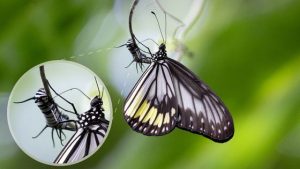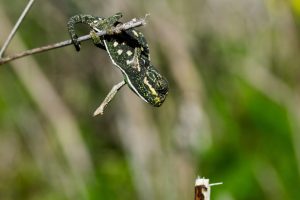Introduction
In recent years, scientists have uncovered fascinating biological behaviors that reshape how we understand interactions between species. One such phenomenon is kleptotoxicity — a complex process that blends theft and toxicity in nature. The term may sound unusual, but it’s an important concept in evolutionary biology, especially when studying predator-prey and parasitic relationships.
Essentially, kleptotoxicity occurs when an organism steals (or “klepts”) toxins from another species and uses them for its own defense or survival. It’s a remarkable adaptation seen in various marine and terrestrial species, allowing weaker or smaller creatures to deter predators using borrowed poisons.
In this article, we’ll break down what kleptotoxicity is, how it works, examples from nature, its ecological implications, and why it’s becoming a growing focus in biological research.
What Is Kleptotoxicity?
To understand kleptotoxicity, it helps to break down the word: “klepto” means to steal, and “toxicity” refers to poison. So, kleptotoxicity describes the process by which one organism steals toxic chemicals or compounds from another.
This isn’t about random theft — it’s a sophisticated biological tactic. Many animals can’t produce toxins naturally, but they can acquire them from their prey or surroundings. Once these toxins are absorbed or stored, the new host can use them as a form of chemical defense against its own predators.
Examples in Nature
-
Sea slugs (nudibranchs) are classic examples. They consume toxic sponges or jellyfish and store their toxins in special glands, making themselves poisonous to predators.
-
Some insects absorb toxic compounds from plants and use them as defense mechanisms.
-
Amphibians, like certain frogs, can accumulate toxins from their diet and pass them on through skin secretions.
Kleptotoxicity, therefore, isn’t just a quirky natural behavior — it’s a survival strategy that can influence entire food chains and ecosystems.
How Kleptotoxicity Works: The Science Behind the Process

The mechanisms of kleptotoxicity are as fascinating as the concept itself. When an organism consumes a toxic prey, several biological processes determine whether it can successfully harness the toxins.
Absorption and Storage
After ingestion, the toxins must pass through the digestive system without breaking down. Specialized adaptations allow certain animals to sequester toxins in their tissues, glands, or even skin layers.
Chemical Modification
Some species chemically alter the toxins to make them more effective or less harmful to themselves. This modification ensures self-resistance — the ability to use poison without succumbing to it.
Defensive Deployment
Once stored, toxins can be deployed when needed — through venom, secretions, or even bright warning colors (aposematism) to deter predators.
Scientific Insight
Studies show that kleptotoxic species often evolve genetic resistance to the toxins they accumulate. This creates a delicate evolutionary balance between predator and prey — a kind of biological arms race.
In essence, kleptotoxicity demonstrates how nature constantly finds innovative ways to survive, evolve, and adapt.
Examples of Kleptotoxicity in the Animal Kingdom
To truly grasp the beauty of kleptotoxicity, let’s look at real-world examples that showcase this phenomenon across different species.
Nudibranchs (Sea Slugs)
These colorful marine mollusks are among the most studied kleptotoxic animals. They feed on toxic sponges, jellyfish, and corals, storing their prey’s venomous compounds in specialized sacs. As a result, predators learn to avoid them — a process reinforced by their bright, warning coloration.
Poison Dart Frogs
While not traditionally kleptotoxic in the same sense, certain frog species exhibit a similar pattern. They acquire toxins from the insects they eat, particularly ants and beetles containing alkaloid poisons. These chemicals are then secreted through their skin as a defense mechanism.
Insects and Plants
Some butterflies and beetles feed on toxic plants, retaining the poisonous compounds in their bodies to deter predators. For example, monarch butterflies ingest cardenolides from milkweed, which make them distasteful to birds.
Sea Cucumbers and Flatworms
Research has also shown kleptotoxic behavior in sea cucumbers and marine flatworms, which accumulate toxins from the algae and animals they consume.
Each of these cases highlights kleptotoxicity as an evolutionary masterpiece — where survival depends not on size or strength, but on chemical cunning.
Why Kleptotoxicity Matters in Ecology and Evolution

Kleptotoxicity isn’t just a biological curiosity — it has profound ecological and evolutionary implications. Understanding this process helps scientists unravel the intricate relationships that sustain ecosystems.
Predator-Prey Balance
Kleptotoxic organisms alter the dynamics between predators and prey. Predators learn to avoid toxic individuals, which can shift feeding patterns and even population sizes.
Chemical Ecology
Kleptotoxicity plays a role in chemical signaling, where the presence of toxins communicates danger or deterrence. This affects how species interact within their environment.
Evolutionary Adaptation
Over generations, species may evolve to exploit kleptotoxic behavior more efficiently — developing molecular resistance and specialized organs for toxin storage.
Ecosystem Health
Because toxic compounds often originate from plants or microorganisms, kleptotoxic species act as chemical conduits — linking different levels of the food chain in complex ways.
In short, kleptotoxicity demonstrates nature’s resourcefulness, showing that survival often depends on creativity and cooperation rather than aggression alone.
Kleptotoxicity and Human Research: What We’re Learning
The study of kleptotoxicity isn’t just fascinating for biologists — it’s increasingly relevant for medical, pharmacological, and environmental research.
Biomedical Applications
Scientists study kleptotoxic animals to understand toxin resistance and chemical sequestration. These insights could lead to new treatments or drug delivery methods inspired by natural defense systems.
For example, understanding how sea slugs safely store deadly toxins could help researchers design safer ways to handle or neutralize venom in medical contexts.
Environmental Conservation
As ecosystems change, studying kleptotoxic species helps scientists monitor biodiversity and assess the impacts of pollution and habitat loss.
Synthetic Biology and Biomimicry
Researchers are also exploring how biomimicry — designing technology inspired by nature — can use kleptotoxic mechanisms for creating new materials or defensive technologies.
By observing kleptotoxic organisms, humans gain clues about resilience, adaptation, and balance, which are crucial lessons for managing our own environmental footprint.
Common Misconceptions About Kleptotoxicity

Like many scientific terms, kleptotoxicity can be misunderstood. Here are a few myths worth clearing up:
Kleptotoxicity Means Producing Toxins
False — kleptotoxic organisms don’t create toxins themselves. They acquire and store them from other organisms.
It’s Rare in Nature
Actually, kleptotoxicity is more common than most people think. It occurs in marine life, insects, amphibians, and even microorganisms.
It’s Always Harmful
Not necessarily. While toxins can be dangerous, kleptotoxicity often helps maintain ecological stability by controlling predator-prey populations.
By understanding these distinctions, we appreciate how kleptotoxicity represents an evolutionary strategy, not just a dangerous quirk of nature.
Conclusion
Kleptotoxicity is one of nature’s most remarkable examples of biological innovation. By stealing and reusing toxins from other organisms, species across the planet have developed ingenious ways to defend themselves and thrive.
From sea slugs to butterflies, kleptotoxic organisms prove that evolution isn’t just about strength — it’s about adaptability and intelligence. As science continues to uncover more about this phenomenon, we gain deeper insights into the complex web of life that connects all living things.
Understanding kleptotoxicity reminds us that survival often comes not from dominance, but from balance, cooperation, and evolution’s endless creativity.
FAQs About Kleptotoxicity
What does kleptotoxicity mean?
Kleptotoxicity refers to when an organism steals toxic chemicals from another species and uses them as its own defense mechanism.
Which animals show kleptotoxic behavior?
Sea slugs, butterflies, beetles, and certain frogs are known examples.
How is kleptotoxicity different from toxicity?
Toxicity refers to the presence of poison; kleptotoxicity involves stealing and reusing toxins from another source.
Why do scientists study kleptotoxicity?
It provides insights into evolution, ecology, and possible medical applications.
Can kleptotoxicity affect humans?
Not directly, but studying it helps researchers develop safer handling methods for natural toxins and bio-inspired solutions.